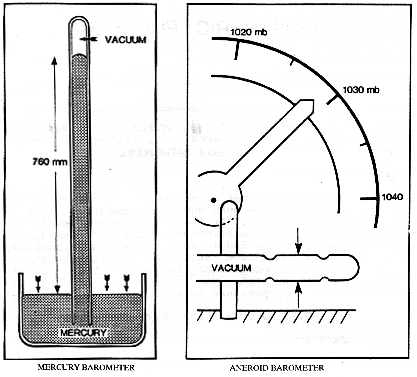What Is Atmospheric Pressure?
Atmospheric pressure is defined as the force per unit area exerted against a surface by the weight of the air above that surface.
Earth's atmosphere is pressing against each square inch of you with a force of 1 kilogram per square centimeter (14.7 pounds per square inch). The force on 1,000 square centimeters (a little larger than a square foot) is about a ton!
Atmospheric pressure is measured by a barometer. A mercury barometer (mb) measures the pressure by noting the length of mercury which is supported by the weight of the atmosphere.
One centimeter of mercury is equal to 13.33 mb, so normal atmospheric pressure can support a column of mercury about 75 cm (or 30 inches) high. An aneroid barometer is a more compact instrument for measuring pressure. It consists of a box of partially exhausted air which expands and contracts as the pressure falls and rises. The box is connected through a system of levers to a pointer which, in conjunction with a dial, indicates the pressure.

|